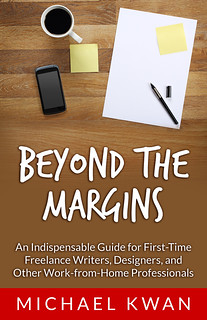For the longest time, I was shooting most of my video with an old Flip Mino HD. The quality wasn’t great, but it got the job done. These days, most smartphones are capable of shooting far better quality video than what that little pocket camcorder can produce. However, they come with their own set of problems, so I found myself in the market for a new video camera.
After some back and forth, I ended up with a Canon ELPH 340 HS… which is a point-and-shoot digital camera from 2014. What was I thinking?
Breaking a Camel’s Back, Invariably
Let’s take a couple of steps back. You might recall I faced a similar dilemma a couple of years ago when I ultimately decided to upgrade to an older smartphone too. I could have gone with the newest and the shiniest, but that would have also meant going with the most expensive. As a tech journalist, I get to dabble in all sorts of new gadgets all the time. I don’t need the newest gear for myself to satiate my appetite for gadgetry.
I’d like to think I’m frugal like that.
I’ve since upgraded to a newer smartphone that’s better in just about every way. However, it suffers from the same problem that plagues all smartphones: while it can shoot full HD 1080p video, the resulting files have a variable frame rate. And this becomes an absolute pain to edit, because the audio and video gets out of sync when I toss the files into my editing software.
Shooting and editing my video tour of Le Westin Montreal was the last straw. The sync issue was positively horrendous and the “popping” audio didn’t make things any better. I can honestly and humbly say that was probably one of my worst hotel room tour videos in a long time.
But why did I get this camera?

If I Could Turn Back Time
In going through my online research, as I am apt to do, I arrived at a couple of important conclusions.
First, if I really want to step up my game with higher quality video (and audio), I’d have to be willing to spend a lot more money and I’d have to lug around something a lot bigger. I’m not terribly interested in getting an SLR — I am still using the Olympus E-PL1 I got six years ago for my primary photography — and I honestly wanted to keep my budget modest.
Second, in terms of a getting a decent “vlogging” setup for less money, the Canon ELPH series is where it’s at. Some YouTube pros recommended the ELPH 110 or the ELPH 300 (both of which are typically beyond the $300 US range), but many cameras in this series are very similar. These compact point-and-shoots aren’t going to compare to anything more professional, but they offer great bang for the buck.
I wanted good autofocus, constant frame rates, 1080p video, easy operation, and (ideally) a compact size. The right ELPH ticks all those boxes.
Well, That Was Easy
In trying to score a deal, I found that the Canon ELPH 360 HS is currently on sale at many Canadian retailers for about $210. I seriously considered it. And then I found that last year’s model, the ELPH 350 HS, can be had for a little less. And then, on a whim, I searched the Staples Canada website and found the Canon ELPH 340 HS on clearance for $99.97.
Score! Online comparisons reveal that not much has changed in the last couple years, so the 340 really isn’t all that different from the 360.
When I did my search, the ELPH 340 HS was showing up as being sold out online and unavailable at almost all the stores in my area. There was just one left at a location about 20 minutes away, so I called them to set it aside for me. This was, in a sense, a “planned” impulse buy. At $100, I figured this could be at least a fun new toy for not very much money.
And so, here I am with a “new” point-and-shoot camera that was originally released two years ago. I’ll probably get some test footage up on my YouTube channel soon.






Trackbacks/Pingbacks